New study: Mitigating hurricane damage in pecan
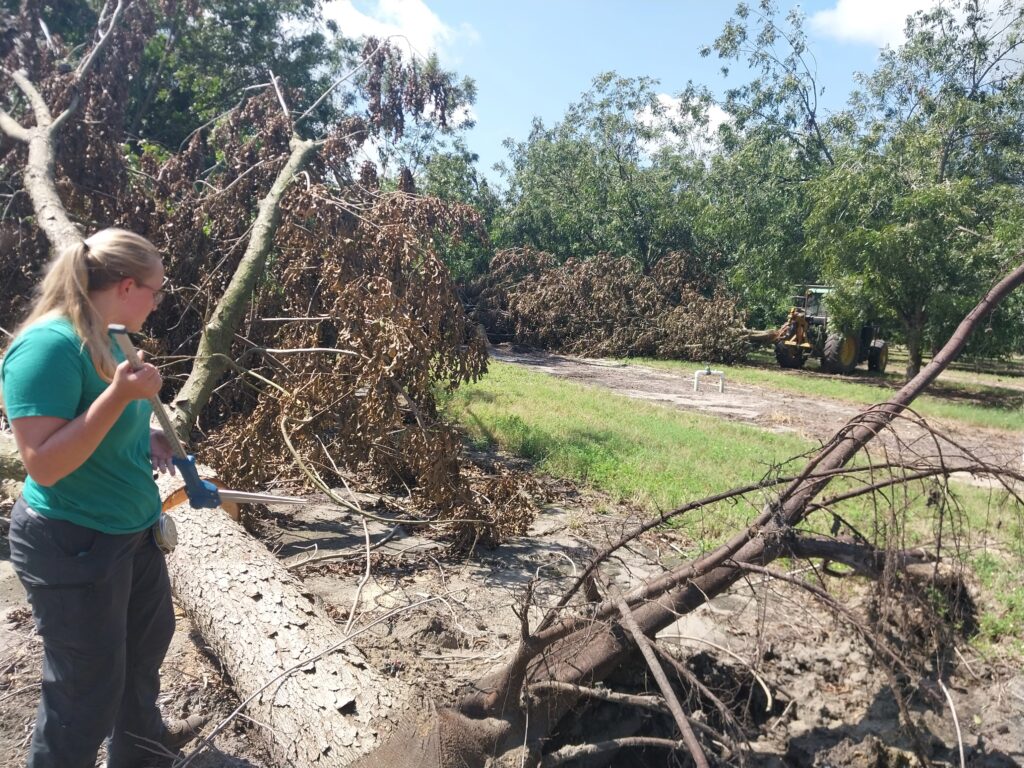
Pecan orchards are a vital part of southern Georgia’s working landscapes, but recent hurricanes have caused severe losses to growers. In a post-storm field study, our lab surveyed over 1,100 trees across 11 orchards following Hurricane Idalia to understand patterns of wind damage. We found that intermediate-sized trees were most vulnerable and that orchard age structure plays a key role in storm resilience. These findings provide a foundation for climate-smart practices that can reduce risk and improve long-term sustainability.
Now hiring: Landscape Ecology Seasonal Technician
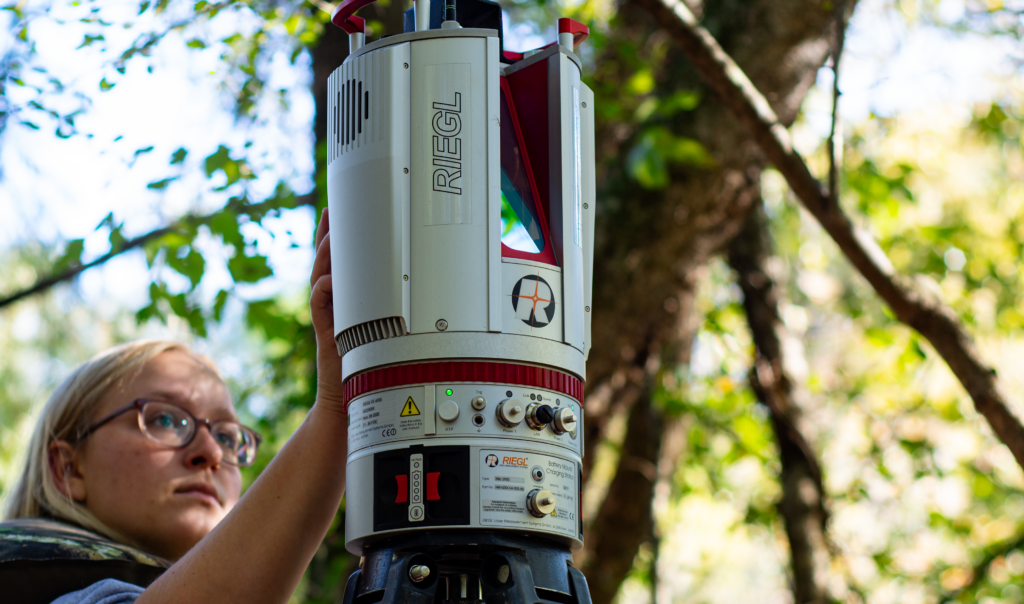
We are seeking motivated individuals to apply for a Seasonal Technician position to contribute to research on restoration and hurricane ecology of longleaf pine woodlands. The successful applicant will assist with field data collection on forest restoration research, and collection and processing of terretrial lidar data. The position will work in a team setting with staff of the Landscape Ecology lab at the Jones Center at Ichauway. Applications reviewed immediately.
Extracting Stand Attributes from Aerial LiDAR Data

I was tasked with using aerial LiDAR to monitor changes in forest structure in a 30-year-old longleaf pine stand after thinning. After completing our lab’s online tutorials for getting started with LiDAR, I was able to develop an R script for estimating tree- and stand-level attributes. Follow along on this tutorial to see how simple remote sensing can be!
New study: Patchy longleaf pine regeneration changes fuels and fire behavior
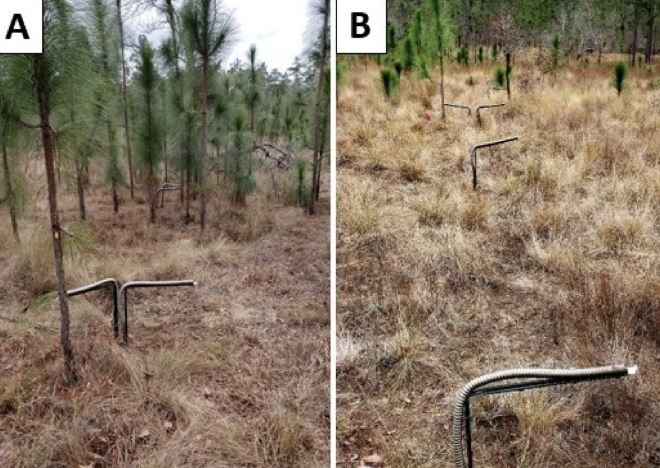
Longleaf pine ecosystems depend on frequent fire which changes competitive and growth dynamics of the ecosystem. However, fire behavior is complex and driven by complex feedbacks between fire effects, fuels, and vegetation. In an intensive field study, we investigated how dense patches of longleaf pine regeneration can change fuels and fire behavior compared to regenerating saplings occuring singly. We found that regeneration have altered fuels, and often reduced fire behavior in a manner that likely shapes spatial dynamics in the ecosystem
Now recruiting: PhD Research Assistantship in Forest and Fire Ecology

We are seeking motivated individuals to apply for a PhD research assistantship in Forest and Fire Ecology. The research will combine field intensive fuel, fire behavior, and regeneration data collection, mapping and processing, and capitalizing on existing and new data from the Ichauway Forest Dynamics Plot at the Jones Center. The student will be appointed as a Graduate Research Assistant (GRA) but will assist with teaching undergraduate courses in Forest Fire Management and Forest Ecology. Although a PhD student at Auburn University, the student’s work will be co-sponsored by the Jones Center at Ichauway. Applications reviewed February 28, 2025.
Lab’s mesophication work featured on Fire Ecology Chats Podcast (Ep. 37)
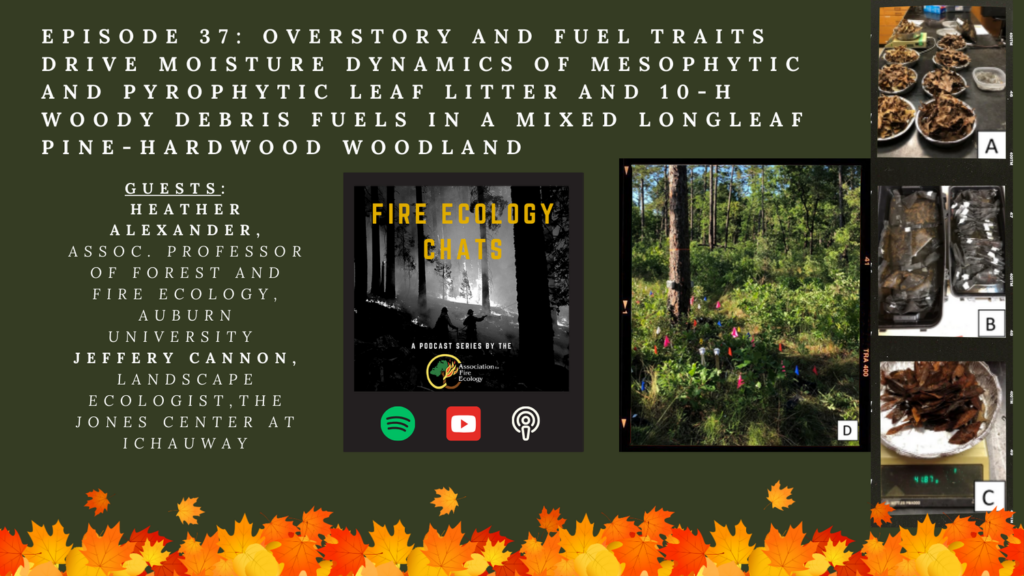
In this episode of Fire Ecology Chats, Fire Ecology editor Bob Keane speaks with Heather Alexander and Jeffery Cannon about reintroducing fire into mixed longleaf pine-hardwood woodlands, and how that will be affected by the shade-tolerant, fire-sensitive species that have grown during periods of fire exclusion.
Now hiring: Landscape Ecology Geospatial Analyst

We are seeking motivated individuals to apply for a Geospatial Analyst position to contribute to research and development that will improve forest conservation efforts in the southeastern US. Both remote and in-person candidates will be considered. The successful applicant will integrate cutting edge technologies (UAV and lidar), field experiments, and data science techniques to contribute to collaborations with conservation agencies and research partners. The position will work in a team setting with staff of the Landscape Ecology lab at the Jones Center at Ichauway. Applications reviewed immediately.
Lab’s fire research featured on Fire Ecology Chats Podcast (Ep. 36)
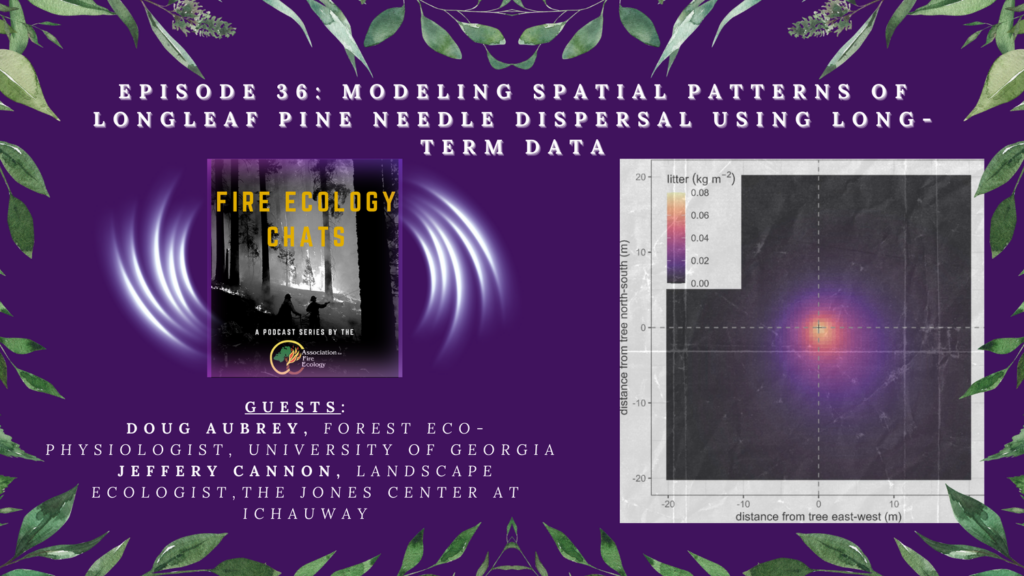
In this episode of Fire Ecology Chats, Fire Ecology editor Bob Keane speaks with Doug Aubrey and Jeffery Cannon about better predicting the leaf litter component in a pine forest to better understand how fire might move through forests under different management scenarios.
Webinar: Future directions for hurricane disturbed forests

This webinar features a panel of experts in silviculture, forest economics, management, and disturbance to discuss challenges and opportunties for resarch and outreach related to hurricane disturbaed forests.
Featured speakers include Dr. Christine Cairns Fortuin, Dr. Jeffery Cannon, Dr. Robert Chastain, Dr. Michael Crosby, Dr. Jesse Henderson, Dr. Bruno Kanieski da Silva, Dr. Adam Polinko, and Dr. Shaun Tanger.
Longleaf Alliance: Lab Studies in Hurricane Ecology

Join the members of the Jones Center Landscape Ecology Lab as we present our latest research at the 15th Biennial Longleaf Conference, taking place from October 7 to 11, 2024, in Miramar Beach, Florida.
Presentations from our lab will focus on hurricane ecology in longleaf pine, considerations for management hurricane risk to longleaf pine ecosystems, and two lab members will debut work on hurricane ecology using dendrochronological and remote sensing techniques
